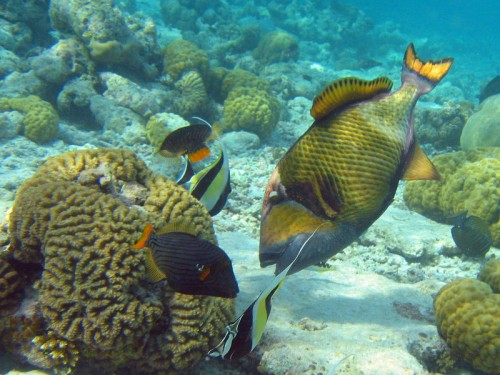Sand Tiger Shark
The Sand Shark, which is also known as a sand tiger has a very aggressive and ferocious look.
This look is deceptive, with their mouth full of teeth, sharp and sticking out in all different directions. They have large heavy bodies and many teeth, showing even when the mouth is closed, which gives them the appearance of a deadly predator, yet in spite of their looks, they are a very docile shark, normally not aggressive and known to attack only when truly hunted and bothered by humans.
Of course, who knows what a shark may find troublesome!!

The Sand Tiger looks quite fierce
Sand sharks are a brown gray color and are covered in rusty colored spots both on top and on their stomachs. They have flatter snouts, shaped very much like a cone, and a very distinct elongated tail that is notched on the upper lobe, and that lobe is also much longer than the one beneath it.
They can range in size from 6 feet up to about ten feet in length.
They get their name from a tendency to gravitate toward the shoreline, and can be seen nearly any day, trolling across the ocean floor often very close to the shore, in warmer or subtropical waters all throughout the world, with the one exception being that of the Eastern Pacific zone.
Sand tigers are the one shark that has been seen to regularly come to the surface and gulp in air. They store it in their stomachs, which helps them to float completely motionless in the water while they are searching for prey to eat.
A sand tiger is a very voracious eater, and an aggressive predator, feeding at night, they will stay quite close to the bottom when they feed, eating smaller fish, crustaceans such as lobster and also squid. At times they will hunt in groups, or pack’s and have been seen attacking full fishing nets to try to take the fisherman’s catch from the net.
The species of Sand Tigers is very wide spread and is not used or fished a great deal for food, but it does have one of the lower rates of reproduction of all sharks, producing just one infant every three or four years. Although they are not in danger they could easily be susceptible if they were fished or hunted and for this reason, they are protected in most areas where they are found.



DO YOU KNOW ABOUT NEW MEGALODON SPECIES.